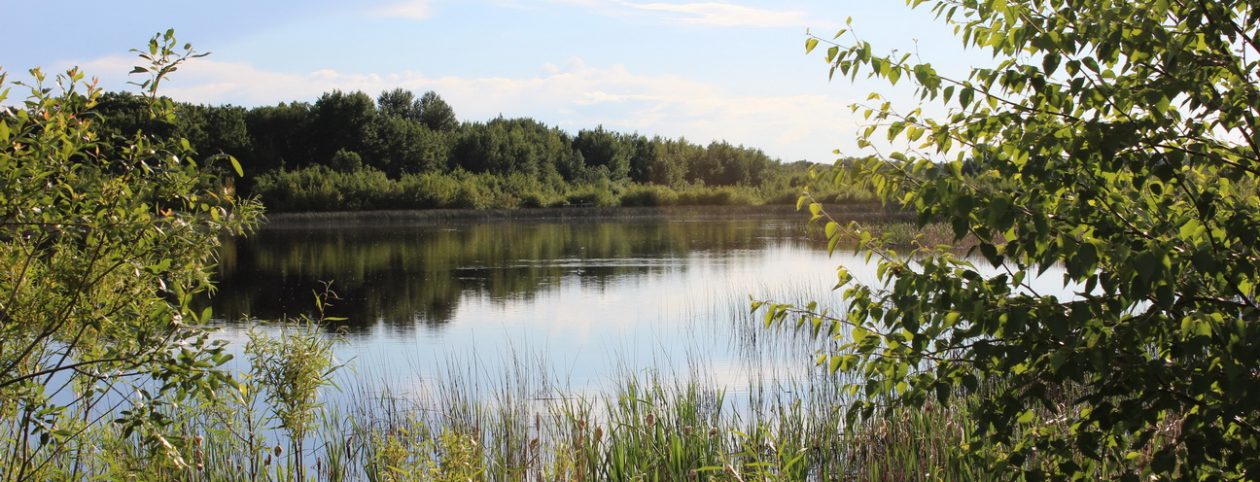It’s been another busy summer at the Sanctuary, but there has been lots of birds and wildlife to view from a mother moose and her calf through to lots of Yellow-headed Blackbirds that seem to have made a real resurgence. Fall is starting to show as leaves are starting to change – in particular for the White Birch. Geese are also starting to congregate for their flight south.
All posts by admin
June 2021
Visitors to the Sanctuary will notice quite a few standing, dead trees surrounding the marsh edges. This is due to the exceptionally high water levels of last year that flooded some forest areas. Many trees do not tolerate prolonged flooding so ended up dying.
While this may seem unfortunate, it is part of the natural cycle of a wetland as water levels change. These dead trees will no doubt end up harbouring many insects that a variety of birds will be attracted to over the years – good for the birds and the bird watchers out there!
Speaking of birds, there seems to be a real diversity of waterfowl attracted to the Sanctuary this year including lots of Northern Shovelers, Blue-winged Teals and Ruddy Ducks. You may also have the chance to view Yellow-headed Blackbirds, the official emblem of the site, that seem to have returned in much greater numbers this year.
August 2020
What an amazing year for dragonflies! Perhaps because of the higher water levels such a variety in type and number of dragonflies has been seen flying about the Sanctuary. The mosquitoes didn’t stand a chance!
With the high water levels, its also been possible to observe waterfowl incredibly close to the boardwalk which is quite interesting. It is quite odd to see coots, mallards or grebes swimming through submerged tree trunks or even coming from beneath the boardwalk itself.
July 2020
The water has continued to rise in the wetlands of the Sanctuary and it is really something to behold with water extending into the trees at many points meaning you are quite likely to see a Coot, Mallard or muskrat swimming around under the tree canopy. Sticking out of the water you can also see many kinds of flowering plants such as Mealy Primrose and Pink Wintergreen. This also seems the season for Wild Roses and the scent of them is quite amazing.
Keep a watch out for the the young of various types of waterfowl like the American Coot – they’re not so small anymore!
June 2020
It is a real water world this spring at the Sanctuary with higher water levels then there has been for years. It is really clear why the boardwalks are needed! With the extra moisture all the plants and wildlife seem to be loving it. Robins are everywhere, as are a variety of interesting waterfowl including Ruddy Ducks and Ring-necked Ducks. With a lot of shrubs in bloom the Swallowtail Butterflies are very plentiful too.
Visitors may notice a lot of the Aspen leaves are curled up and turning brown. If you open one up you will see this is caused by a small worm – an Aspen Leaf-roller.
May 2020
The water levels in the Sanctuary wetlands are very high this spring and attracting all kinds of interesting waterfowl. Some of the really showy ducks seen include Buffleheads, Goldeyes and the ever so unusual Ruddy Duck. The Redheads and Canvas Backs are also interesting to watch. There are also still the occasional flocks of Sandhill Cranes flying over with their distinctive trumpeting call – beautiful!
Things are Greening up!
After what has been a long and slow spring, we are now starting to see the leaves burst out all over the Sanctuary. Along with that have come some of our favourite birds of summer including the Tree Swallows and the Wilson’s Snipe that makes a curious ‘winnowing’ sound you hear in the sky above the Sanctuary as the birds dive. The Canada Geese have been here for a good month already and they are now appearing with the brightly coloured chicks in tow.
June 2018 News
The Sanctuary is really teeming with life this spring. Earlier on the Tree Swallows arrived in huge numbers – filling the sky as they swooped and soared above. Now we seem to have a plethora of Goldfinches that are a real delight with their ‘sa-wheat, sa-wheat” call. There have already been some Canada Geese and goslings seen crossing Sanctuary Road between water bodies – oh so cute! Make sure to bring your binoculars to get a better view of the variety of waterfowl out on the wetland too – a real favourite is the Ruddy Duck with its upright tail and distinctive blue bill.
Loggerhead Lookout
The one bird you may notice hanging around feeder stations in winter is the Loggerhead Shrike. It is an incredibly beautiful, greyish-blue bird that if you look closely has a distinct hooked predator-like bill. This is for good reason as Loggerhead Shrikes are hunters, swooping down from their lookout perches to snag insects, rodents, snakes and sometimes small birds! They are also known as ‘butcher-birds’ as they will often impale their prey on thorns or barb-wire fences – likely to mark territory or attract mates. Make sure to watch for these unique and attractive visitors to the Sanctuary.
January 2018 News
It has really been an odd winter with temperatures swinging between extreme cold to almost melting. You will often hear the Chickadee’s “Springs Coming” call even though we know spring is some time away. It is still a good time to visit the Sanctuary with common sightings being of course Black-capped Chickadees, but also Common Redpolls, Ravens, Cedar Waxwings and occasionally small flocks of Pine Grosbeaks. You may also notice that tree buds have started swelling and Pussy Willows have begun to appear.
